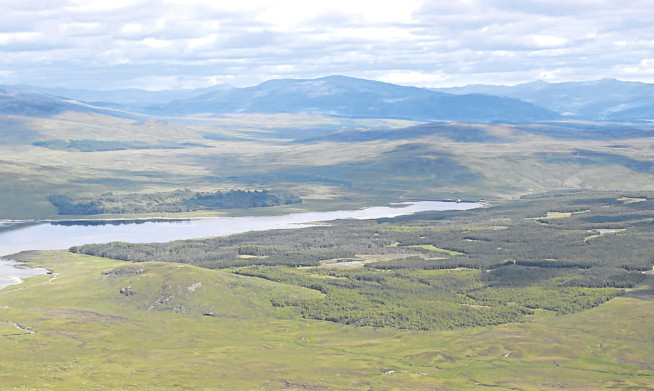Conservation groups, residents, mountaineers and politicians have united in the fight to protect Highland Perthshire’s wildlife and natural environment.
Hugely controversial plans for an industrial scale windfarm in the heart of some of “Scotland’s most precious wild lands” have led to almost unprecedented opposition.
The application by a Dutch firm to create the 24-turbine Talladh-a-Bheithe scheme at Rannoch was made on the very day the Scottish Government declared such areas should be better protected.
It has caused such anger that already nearly 1,000 objections have been received and there has been a debate in the Scottish Parliament and the formation of a campaign to prevent the development ever becoming a reality.
There has also been strong opposition from Scottish Natural Heritage and the Scottish Environment Protection Agency.
Efforts to block the proposals have been led by the Mountaineering Council of Scotland (MCofS), the John Muir Trust (JMT) and Keep Rannoch Wild and they have received celebrity backing from figures such as best-selling Outlander author Diana Gabaldon.
The three bodies are now calling on developer Eventus BV to abandon its plans.
“Wind energy is supposed to help us protect the environment, not ruin the most precious and beautiful parts of our country,” said MCofS chief officer David Gibson.
“We are calling on the developers to recognise that this application has been a huge mistake something that is absolutely clear from the enormous level of opposition.”
Eventus BV has said it will consider all feedback before deciding how to proceed.
The firm, through the wholly-owned UK subsidiary Talladh-a-Bheithe Wind Farm Ltd, has applied to build turbines measuring 125m from ground to blade tip in Highland Perthshire.
They would be accompanied by access tracks, buildings and infrastructure and would produce a significant amount of power for the country.
Opponents, however, claim the scheme would destroy “the special landscape qualities of one of Scotland’s last remaining and most loved areas of wilderness”.
They say that there is growing evidence that the windfarm would do grave harm to wildlife including an estimate by SNH that the turbines will kill a golden eagle every 19 months and endanger otters, ospreys and other species.
The development could also affect views from more than 30 of Scotland’s Munros, including the famous Schiehallion, the Ben Alder massif, mountains above Glen Lyon, the Drumochter Hills and Buachaille Etive Mor, and would be visible from the West Highland Railway line and the A82 road the main tourist route through the area.
Mr Gibson added: “Only by withdrawing this misguided, damaging and unwanted proposal can they make it clear that they, and their industry, have a genuine commitment to protecting the environment and are not just trying to make vast profits at the expense of Scotland’s natural heritage.”
The John Muir Trust, meanwhile, has said the scheme is “a knife in the heart of Scotland’s natural beauty”, describing Rannoch as one of the country’s “most stunning areas of wild land”.
Residents and businesses are also deeply opposed to the project, with a poll showing that three out of four want it blocked.
The economy is highly dependent on tourists who visit the area for its wild and unspoiled qualities to climb mountains, go walking and see the wildlife and there are fears this would be threatened.
Douglas Wynn of Keep Rannoch Wild said: “This is a speculative and totally insensitive proposal which would do great damage if, by any unfortunate chance, it was allowed.
“It is strongly opposed by most residents and we ask the applicant to listen and respect their neighbours’ opinions.”
